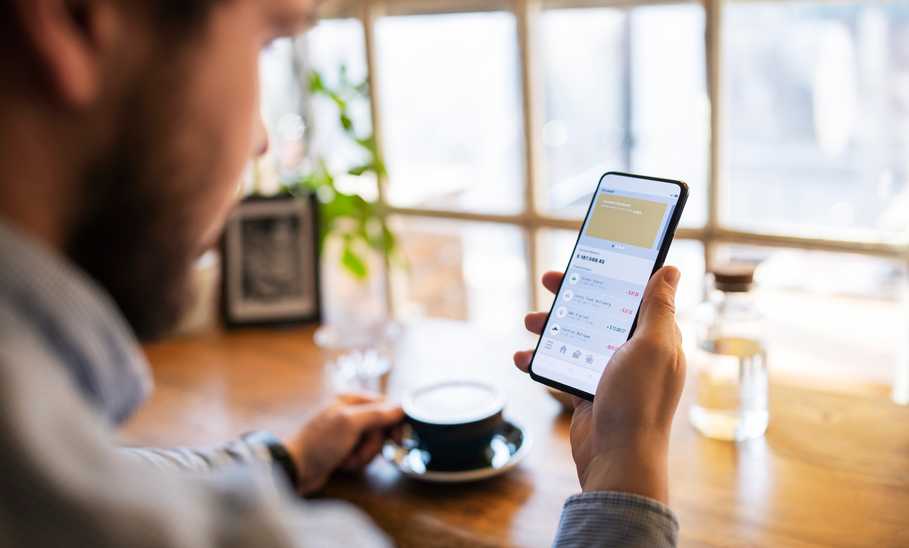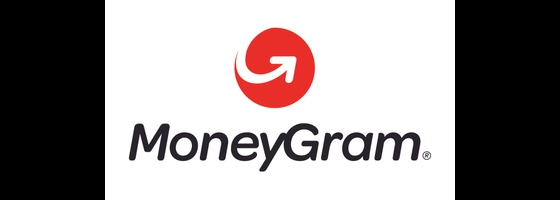- Bank from anywhere, any time
- Usually free to use
- Can save you money on fees
- Wide range of capabilities
What Is Mobile Banking?

Our evaluations and opinions are not influenced by our advertising relationships, but we may earn a commission from our partners’ links. This content is created by TIME Stamped, under TIME’s direction and produced in accordance with TIME’s editorial guidelines and overseen by TIME’s editorial staff. Learn more about it.
Mobile banking refers to the use of a mobile device, such as a cellphone or tablet, to manage financial accounts. Traditional banks, credit unions, online banks, and fintech companies can offer mobile banking applications to customers who are looking for a simpler way to stay on top of their finances.
In terms of the advantages, mobile banking can save time since you can bank from anywhere as long as you have an internet connection. It makes it easy and convenient to stay on top of your finances, since you can pay bills, send payments, or make deposits all from your mobile device. There are some downsides, however, as mobile banking apps may experience technical issues from time to time and they don't all feature the same functionality.
If you're new to using mobile banking, it helps to know how it works and where to find mobile banking apps.
Mobile banking apps share the same purpose: to make banking easier and more convenient for their users. They can be a complement to—or a substitute for—online banking, which entails visiting the bank's website to log in to your account.
The types of features and functions you have depends on which app you're using. Mobile banking apps include apps that are issued by banks and credit unions and ones that are offered by fintech platforms.
If you have accounts at a bank or a credit union, there's a strong possibility that you have access to a mobile banking app. Banks and credit unions can offer mobile banking services through a branded app reserved just for their customers.
For example, if you have an account at Chase Bank then you could visit the Apple App Store or Google Play Store to download the Chase mobile banking app for free. Once you've got the app installed and have set up your login and password information, you can start managing your accounts. Some of the features the Chase banking app offers include:
Of course, Chase is not the only bank that offers a mobile banking app. Here are some additional examples of mobile banking apps, with a brief overview of their features.
| Bank | Description | Top Features |
|---|---|---|
Axos Bank | The Axos Bank app is designed to offer a bird's-eye view of your finances by allowing you to sync all of your accounts, including ones held at other banks. |
|
CIT Bank | CIT's mobile app makes it easy to access checking, savings, money market, and CD accounts from a compatible device. The app is available through the App Store and Google Play store for free. |
|
Discover | Discover's mobile banking app works on a variety of devices, including wearables, which makes it even easier to manage your money from anywhere. |
|
First Citizens Bank | Even though it's a smaller, regional bank, First Citizens offers a robust mobile app that includes a wide range of features. Similar to Axos Bank, First Citizens allows users to view accounts from other banks through the mobile app. |
|
Live Oak Bank | Live Oak Bank offers mobile banking services for personal and business banking customers. Like CIT Bank, Live Oak is an online-only financial institution. |
|
Quontic Bank | Quontic is an adaptive digital bank that offers mobile banking services as well as the option to make payments securely using a unique wearable device called the Quontic Pay Ring. |
|
U.S. Bank | U.S. Bank offers an award-winning mobile app with a full suite of money management tools. Users can connect accounts from other financial institutions for a complete snapshot of their money. |
|
Mobile banking apps offered by fintech companies can have many of the same features as apps from traditional banks. And in some cases, they may allow even greater functionality or offer access to a wider range of services.
The difference is that fintech companies usually aren't banks themselves. Instead, they partner with Federal Deposit Insurance Corporation (FDIC)-insured banks to give their app users access to banking services and protection for their deposits. Chime is a great example.
Chime is a fintech company, not a bank. It offers banking services in partnership with The Bancorp Bank, N.A., and Strike Bank, N.A., both of which are FDIC-insured. Chime users can access those services through the Chime mobile banking app, which allows you to check balances, transfer funds, and pay bills online securely.
Here are a few other examples of mobile banking apps offered by fintech platforms.
| App | Description | Top Features |
|---|---|---|
| ||
| ||
MoneyGram | MoneyGram is a money transfer service that allows you to send funds to virtually anywhere in the world. The MoneyGram app makes it easy to send and receive money without having to visit a MoneyGram location in person. |
|
| ||
| ||
Revolut | Revolut is a global finance app that's designed to simplify money management. Users can see all of their financial accounts in one place and use the app to spend and save. |
|
Mobile banking has some advantages and disadvantages. Comparing the pros and cons is helpful for understanding what mobile banking might be able to do for you, and where it has limitations.
Mobile banking has some definite benefits that can make your financial life easier. Taking a closer look at the advantages can help you decide if using mobile banking might be right for you.
Mobile banking makes it easy to track your bank accounts from virtually anywhere. As long as you've got a stable internet connection, you can log in to the app to view your accounts and perform other banking functions. That's much easier and less time-consuming than having to visit a branch or call your bank on the phone.
Using mobile banking could save you money if you're using features like online bill pay or free money transfer services. Scheduling bill payments through a mobile banking app can help you to avoid late fees. And with a service like Zelle, you can avoid the surcharges that other money transfer services might charge.
RELATED: Best High Yield Savings Accounts
Mobile banking apps can allow you to handle a wide range of banking services in one place. For example, you might be able to pay bills, deposit checks, open new accounts, or adjust your security settings all with a few taps of a button. Thanks to evolving technology, new features are being added to mobile banking apps all the time.
Is mobile banking perfect? No, and there are a few downsides that you might want to be aware of before you start using it.
While banks and fintech companies can take steps to make sure their apps are secure, vulnerabilities may still exist. If your mobile banking app is hacked, that could put your personal and financial information at risk. Taking advantage of every security feature your bank offers is one way to minimize your risk should the app become compromised. And never do mobile banking on public wi-fi. Always use a secure line, be sure you’re connected to a secure line at the bank, and consider using a VPN.
Glitches and bugs happen but when they do, it can be highly inconvenient if you need to log in to your mobile banking app to pay a bill or send a payment. Technical issues can be even more frustrating to deal with if they happen frequently or the bank seems to be slow in addressing them, resulting in longer outages.
While mobile banking apps can offer plenty of features, they aren't all the same. Some apps can be almost overwhelming in terms of how many features they include, while others are decidedly more bare-bones. Choosing the right mobile banking app ultimately comes down to finding the one that offers the features you need most.
Using a mobile banking app isn't that complicated. If you're a first-timer, here's how it works:
Once you've got your mobile app set up, you can personalize your app experience. For example, you might choose to add an additional layer of security beyond a password, such as two-factor authentication or fingerprint ID.
You can also link external accounts to the app if you have that option. That could make transferring funds between accounts easier and you may be able to view all of your accounts in one place.
When you're done using the app, you can log out. The next time you open the app on your device, you'll just need to enter your user ID and password.
What you're able to do depends on the app. But generally speaking, some of the things you may be able to do through mobile banking include:
If you're looking for the best mobile banking app to use, it helps to compare the full range of features offered. It's also important to look at what you might pay to use the app as some may charge fees for access.
Mobile banking has changed how people manage their money in a big way. It's worth considering if you're not taking advantage of its features yet. There are lots of apps to choose from, so it's a good idea to take your time and shop around. Start with your current bank's mobile app, then cast the net wider to include other mobile banking options.
While there are always security concerns surrounding online access to financial accounts, online and mobile banking are safe, by and large. Banks and other financial institutions, as well as fintech platforms, can implement numerous security and safety features that are designed to protect their customers' personal and financial information. Just follow commonsense security rules, such as not banking on public wi-fi networks and using dual-factor authentication.
Typically no. However, some apps, such as Lili, might require you to pay a monthly fee for access, while others might charge fees when you use certain features of the app. For example, if you want to use your bank's mobile app to send a wire transfer, you might pay a wire transfer fee.
In banking, MPIN stands for “mobile personal identification number.” This is a four- or six-digit number that must be entered when using a mobile banking app in order to complete banking transactions. MPIN is a term that's more frequently used in international banking.
The information presented here is created by TIME Stamped and overseen by TIME editorial staff. To learn more, see our About Us page.




